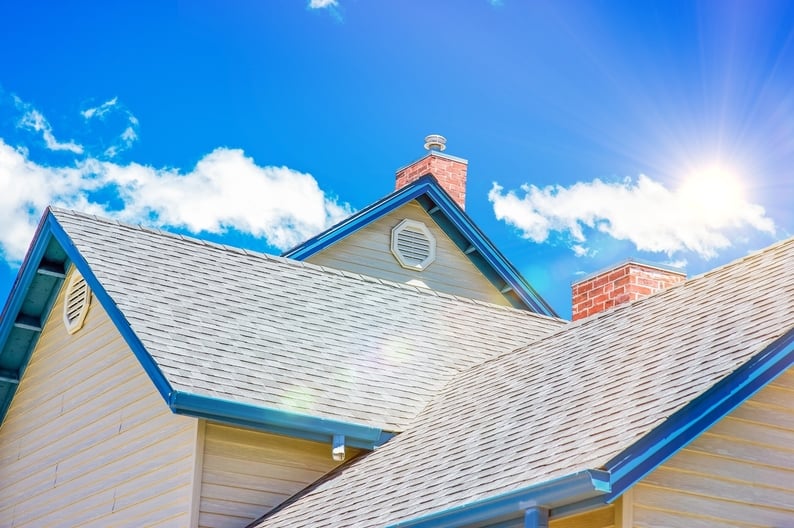
A roof is an essential component of any building. But aside from regular maintenance, it doesn’t generally receive too much attention. But if problems such as leaking occur the importance of a good roof suddenly comes to the top of the home improvement list.
It’s just as vital to maintaining the exterior of your house as it is to have a well-maintained interior. The roof protects your home from outside elements and helps to keep the interior at a manageable temperature.
When the time comes to replace your roof you have several options to choose from. There are many different types of roofs and here we’ll take a look at the wide variety and discuss the benefits of each.
Things to Consider
Before you look at the different types of roofs and decide what the best option is for you, there are a few things to consider. It can help to first make a list of the critical components required for the addition of a new roof.
- How long do you need the roof to last? Different types of roofs have different life spans.
- What kind of weather do you experience in your area? Can the roof you choose withstand these weather conditions?
- The shape or style of the roof, or the environment surrounding the house, can affect installation and maintenance. Is there anything that should be taken into account?
- Is it important that the materials selected are environmentally-friendly and/or recyclable?
- Does your local building codes place any restrictions on the materials you can use?
- Will the material complement the style of the house? Is it important that the roof fits in with the roof styles of surrounding houses?
- How much is your budget? Different materials can vary greatly in price
Once you have the answers to these questions you can then consider your roofing material options.
Popular Asphalt Shingles
When you think of a standard roof, asphalt shingles are often the first material that comes to mind. These are a durable material with a good life span, averaging between 15 to 50 years per shingle.
This kind of roofing material is available in two types – fiberglass and organic asphalt shingles.
Fiberglass asphalt is made of layers of fiberglass, asphalt, and ceramic. Organic asphalt tiles are comprised of layers of recycled felt paper which are then soaked in asphalt.
Asphalt tiles are not the best choice if your area is prone to extreme weather conditions. They are also not an eco-friendly option. Asphalt shingles can give off dangerous fumes when exposed to sunlight.
Environmentally-Friendly Clay Roof Tiles
Do you know that clay roof tiles were used as early as 10,000 BC? Now that’s a durable material!
Clay roof tiles are made of baked molded clay. Colors available are white, brown, yellow, and orange. Sometimes enamel is added to give additional color choices.
They are wind resistant, will not burn in a fire, and the color tends to last for a very long time. These extended benefits are why clay roof tiles are not a cheap option.
Sheet Metal Roofs
Using metals such as tin, galvanized steel, zinc, copper, and aluminum allows for a roof which is durable, fire-resistant, economical, and relatively maintenance -free.
A sheet metal roof can be expected to last a lifetime of between 50 and 75 years. They are very energy efficient as the metal is able to reflect the sun’s rays. Metal roofs can be noisy in the rain, but maybe you enjoy love the sound of rain on a metal roof?
Natural Wood Shingles
A rustic wood roof has a charm of its own. The wood gives the house a very natural appearance and the ability to blend in with its surroundings.
Wood shingles are usually made of cedar, southern pine, or redwood. Due to the natural and unique nature of the material, you will never find two wood shingle roofs that look exactly alike.
But do expect your wooden roof to require more maintenance than other types of roofs.
Roof Tiles Made of Concrete
Sand, cement, and water combine to make concrete roof tiles. The result is a durable tile which is low maintenance and not likely to be damaged by rot, water, fire, or insects.
Concrete roof tiles can be designed to replicate the look of other roofing materials such as clay, slate, and wood. However, this option of roofing material can also be expensive.
Slate Shingles
Using natural slate stone as a roof is a very eco-friendly option. The shingles are long-lasting, require no chemicals to manufacture, and there are no harmful by-products.
The slate stone shingles do not break easily, will not rot, and even an extremely high wind will not be blown away. Slate shingles are one of the most expensive choices when considering different types of roofs.
Photovoltaic (Solar) Shingles
Applying solar shingles to roofs makes a great deal of sense. These shingles incorporate small solar panels into the tile, allowing solar energy to be converted for household use.
This option can help to reduce energy bills and is environmentally-friendly. Unfortunately, they can be damaged by strong winds or hail and the technology is still very much in the experimental phase.
Green or Living Roofs
A charming image of a Hobbit house may spring to mind when you think of green roofs. A roof made of grass, vegetables, or small bushes is very appealing. It can also be very useful.
But keep in mind that a lot of work is involved in the construction and maintenance of these types of roofs. They must be structurally sound, waterproof, and provide adequate insulation.
You could end up with the prettiest roof on the street but it may not be as long-lasting and durable as other types of roofs.
Speak to the Experts About Different Types of Roofs
Need more information about your home roofing project? Still not sure which of the different types of roofs is right for your needs?
Talk to the friendly team at Pacific Coast Roof today about your roofing and home improvement requirements.

